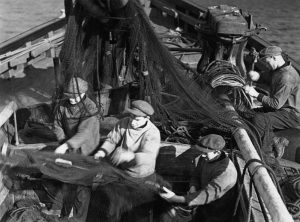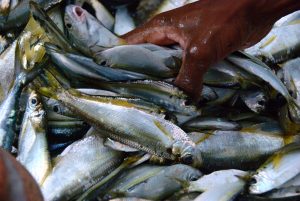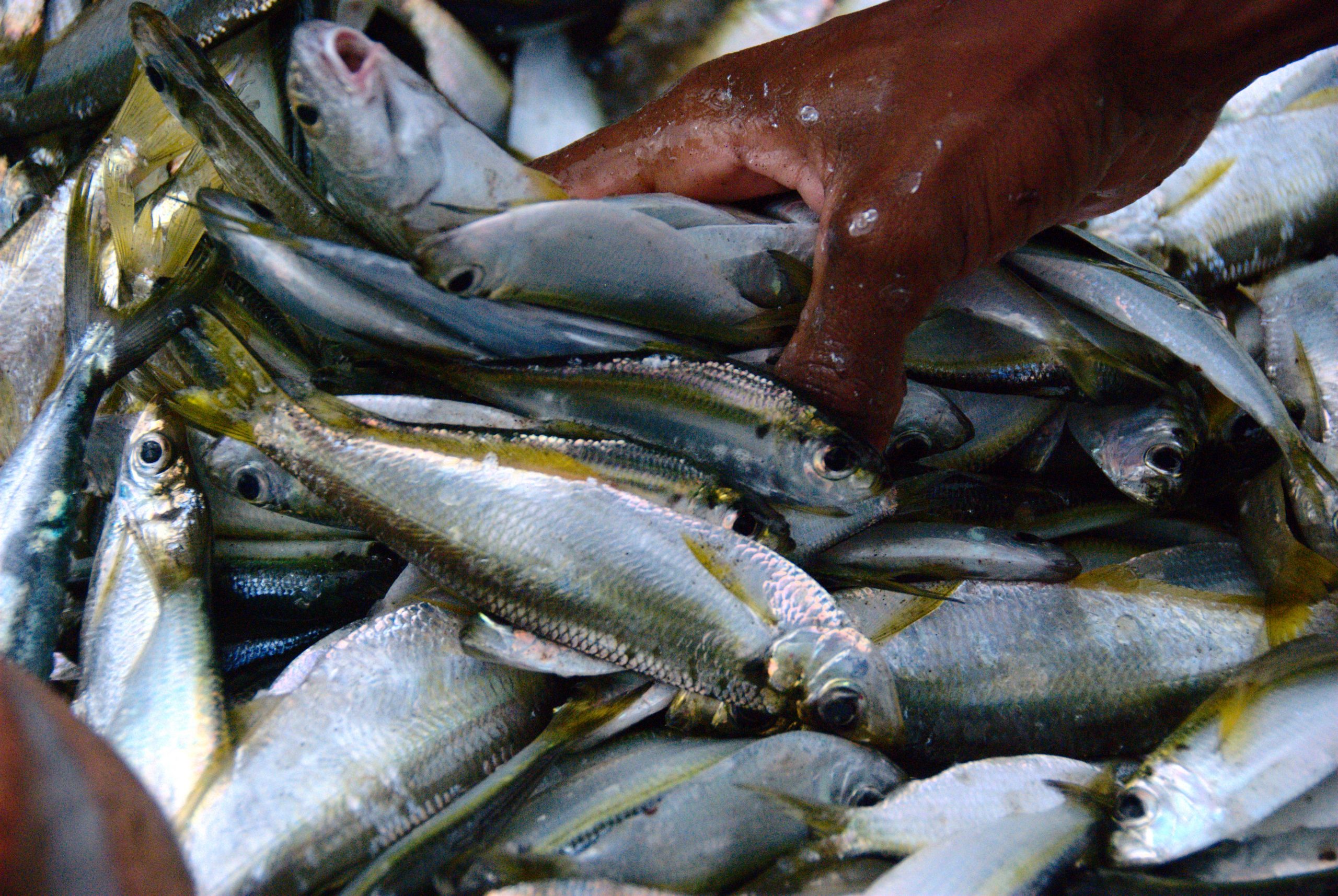Study: Rodriguez-Labajos, B., Saavedra-Díaz, L. M., & Botto-Barrios, D. (2021). Filmmaking as a source of enhanced knowledge and transformation in conflicts over small-scale fisheries: The case of Colombia. Ecology and Society, 26(2), art5. https://doi.org/10.5751/ES-12217-260205
Fish and films

Let’s call it the Seaspiracy Problem. Earlier this year, Netflix’s Seaspiracy swept the documentary world. A film rich with emotionally-affective shots and high-tension narratives, it explored the underbelly of industrial fishing and arrived at a ringing call to action: stop eating all fish, now, if you want to save the ocean.
But you know what happened next, right? Even as general audiences applauded the film, fisheries researchers and fishing organizations across the globe released scathing critiques of the documentary. Fisheries experts called into question the factuality of the film’s claims; people interviewed for the film reported that their statements had been taken out of context. On the balance, the fisheries world seemed to agree, Seaspiracy had vilified the wrong actors, slanted facts to match predetermined political ends, and spun a Euro-centric and ultimately harmful message for ocean conservation.
This doesn’t particularly inspire confidence in the insight of films into fishing.
And yet, a team of researchers, filmmakers, and fishers in Colombia might encourage you to give this genre another chance. In their work on small-scale Colombian fisheries, they’ve found that films have a unique ability to tell complex stories of tangled social-ecological fishery systems.
That is, if they’re done right.
Calling Colombia’s fishers and filmmakers
In 2018, a team of researchers in Colombia sent out a call to local NGOs, fishers’ organizations, universities, and government groups, requesting submissions to their inaugural project: a documentary-film-fest-slash-research-conference on the topic of Colombia’s small-scale fisheries.
As a topic area, this is a rich one. Colombia, positioned at the very tip of South America, sources fish from both the Pacific and the Caribbean, not to mention its freshwater. As a result, Colombia’s fisheries are among the world’s most diverse in terms of targeting different types of fish.
These fisheries are also in the midst of conflict. Some conflicts are environmental— Colombia’s coastal and inland waters, like those around the globe, are facing high levels of habitat destruction, pollution, and climate change. Weak fisheries governance limits the potential to instate sustainable fishing practices. Plus, Colombian fishers have to navigate persistent civic unrest and human rights violations. Conflict on land spills over to the sea, and civilians, including small-scale fishers, often bear the brunt of the violence and unrest.
It’s this complicated space that researchers wanted to explore in partnership with fishers and fishing communities experiencing these conditions. When they sent out the call for films, they asked contributors to submit pieces that deal with fisheries conflict.
The call was successful: researchers received twenty films exploring conflict in Colombia’s marine and inland fisheries. Over two days in early May 2018, filmmakers, fishers, government managers, and researchers gathered to watch and discuss these films.

Positive impacts of a docu-conference
After watching a film together, docu-conference participants joined in conversation about the topics and conflicts explored by the filmmakers. Researchers recorded and transcribed these discussions, then pored through the transcripts, looking for themes and patterns in the films’ impacts.
Films offered viewers a way to relate to a number of small-scale fisheries conflicts in Colombia. In watching images and hearing the words of the fishers in the midst of conflict— be that facing loss of fish habitat due to a mine, or pulling up empty nets due to overfishing in the Caribbean— viewers developed understanding and connection to the film’s characters. They also felt more connected to the physical places shown in the film, building place attachment. Films did not shy away from showing the real complexity of these conflicts, but in building relation between the viewer and the topic, films opened up an avenue for more learning and support.
Films weren’t only positive for the viewers. They also had positive impacts for the filmmakers, and the people whose stories were highlighted in the film. Filmmakers, particularly young Colombians pursuing creative endeavors, benefitted from the opportunity to express their artistic voice in creating these films. People highlighted in the films benefitted from a platform through which to tell their story.
And all parties — viewers, filmmakers, film subjects — experienced positive emotions, even as they viewed films about conflict. Somehow, hope and optimism were possible.
Limitations to keep in mind
That’s not to say films don’t face limitations. Even as docu-conference participants explored the sense of relation and voice and hope cultivated by these films, they also noted potential pitfalls of documentary filmmaking.
One all-too-common pitfall is the failure of representation. This happens when filmmakers sweep in and tell the stories of a community without involving or consulting with local voices. Another pitfall is the misrepresentation of scientific understanding, when filmmakers misinterpret or ignore the findings of research in these areas. (If you followed Seaspiracy, these should both sound familiar.)
And while films are powerful in creating platforms for the voiceless, they can also create danger for film participants. People who share the stories of their conflicts and struggles can face backlash for speaking up.
A better way to make and share fisheries films
As participants discussed these limitations, they also arrived at different ways of operating to try to avoid them. A solution to the Seaspiracy Problem, if you will.
The central point is the meaningful collaboration between the makers of the films and the communities portrayed in the films. Sometimes these are the same people — but often, filmmakers from other places bring their expertise and technical resources into the community. That can be a beneficial relationship for all, but only when it’s approached with a commitment to sharing resources and allowing community members decision-making and authority in telling their own stories.
That engagement extends beyond the community of fishers to the community of scientists with perspectives that bear on these conflicts. By engaging with scientists in the filmmaking process, films have a better chance at presenting a full picture of the conflicts they describe — avoiding things like the Seaspiracy problem.
Rather than only shipping films away to be shown far from where they take place (though that can be beneficial, too), participants recommended aligning film releases with different NGOs and community activities — such as post-screening discussions or visits to the communities featured. Rather than just an hourlong experience, the film becomes an opportunity for peer-to-peer learning and a still deeper dive into the complexity of small-scale fisheries.
What is especially clear is that, in the messy tangle of small-scale fisheries, with their complex interminglings of biology and society, films have a particular role to play in telling a complex story.
As one participant reflected, “a film is worth much more than a thousand words”.

PS: Curious about some of these films? Take a look at some of these features from the docu-conference: De Faena, relatos de la vida en el Golfo de Urabá (documentary, 27m33) ; Niños y jóvenes de Buenaventura cantan para combatir la pesca ilegal(music video, 5m01); Pensando Colectivamente el Manejo de la Pesca Artesanal Marina en Colombia (documentary, 18m19).
Hello! I’m a third-year PhD student at University of California, Davis, in the Center for Environmental Policy and Behavior. My research focuses on how coastal communities make decisions around climate change adaptation. I’m lucky to get to explore this question across the West Coast (school!) and the East Coast (home!). When not PhD-ing, I’m happiest when reading, writing, backpacking, or gazing at the sea– whether that’s the Pacific or the Atlantic.


